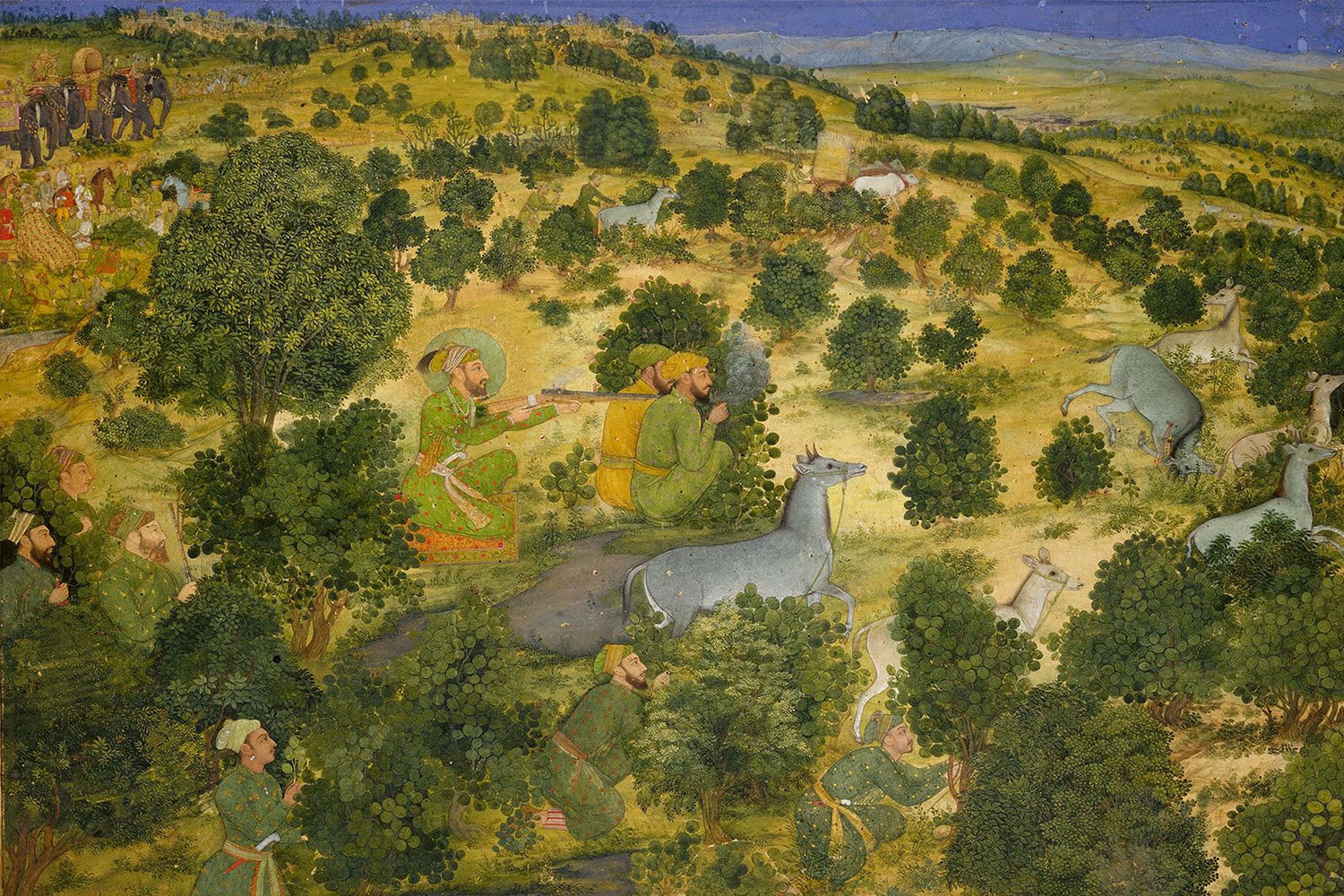ARTICLE
Hashim
Except for the later scenes of Aurangzeb, the subjects of Hashim’s political portraits are usually depicted standing alone, with their faces shown in profile. However, portraits of ordinary or anonymous people, such as a drawing of two musicians made around 1630, are exceptions, showing the faces at natural angles and the figures in varied poses. Known for painting the costumes and accessories of his subjects with great precision and authenticity, Hashim often gave the figures themselves a somewhat stiff appearance. These stylistic traits were preferred for political portraits, both for manuscripts and muraqqa. On the other hand, his preliminary sketches and drawings are more dynamically composed and feature heavy shading, which gives the drawings an intensity that is absent in his finished paintings.
Hashim’s portraits have been part of several murraqas, including the Minto Album. The individual paintings are now housed in museum collections around the world, including at the Victoria and Albert Museum, London, UK; the Chester Beatty Library, Dublin, Ireland; and the Metropolitan Museum of Art, New York, USA.
Bibliography
Our website is currently undergoing maintenance and re-design, due to which we have had to take down some of our bibliographies. While these will be re-published shortly, you can request references for specific articles by writing to hellomapacademy@map-india.org.








